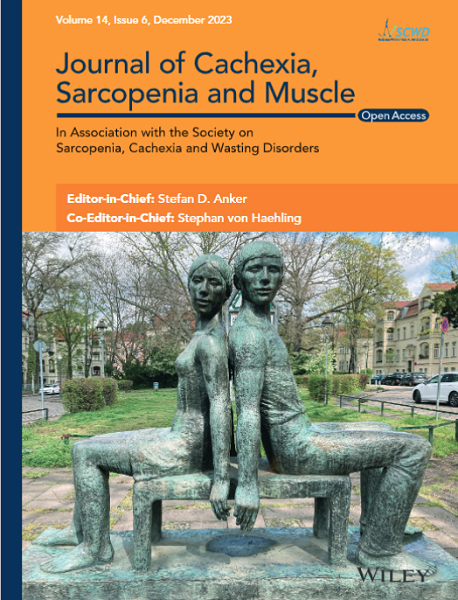Hand grip strength (HGS) may represent an epidemiologically relevant alternative as an initial screening tool for sarcopenia and sarcopenic obesity. However, no study evaluated the performance capacity of HGS compared to other biomarkers in discriminating these conditions in adults.
The study aimed to evaluate the performance of HGS as discriminator of sarcopenia and sarcopenic obesity, compared to urinary biomarkers of creatinine and potassium in 24 h for Brazilian adults.
Cross-sectional study. Women (n = 5431) and men (n = 6351) aged 38–79 years who participated in the Brazilian Longitudinal Study of Adult Health (ELSA-Brasil) at second follow-up of the cohort (2012–2014). The area under the receiver operating characteristic curve (AUC) and the respective 95% confidence intervals were calculated for men and women in different age groups to assess the performance of HGS as a discriminator of sarcopenia and sarcopenic obesity, compared to the biomarkers of potassium and creatinine in urine in 24 h. The outcomes were classified based on the skeletal muscle mass index (BMI/height2) and fat percentage, estimated from the bioimpedance analysis data. Sensitivity, specificity and Brier score were calculated for each estimated HGS cut-off point.
It can be observed that 18.20% (15.51% women; 21.34% men) of the population showed a decline in skeletal muscle mass (sarcopenia). Of this total, 11.61% (10.52% women; 12.89% men) presented the isolated outcome of sarcopenia and 6.59% (4.99% women; 8.45% men) of sarcopenic obesity. The HGS areas under the ROC Curve ranged from 0.54 (CI = 0.493–0.596) to 0.76 (CI = 0.650–0.878) according to sex and age group. HGS performance compared to biomarkers was significantly higher in virtually all strata and outcomes analysed. The cut-off points that demonstrated greater accuracy and better performance in outcome discrimination were ≤ 42, ≤ 41, ≤ 38 and ≤ 36 kgf among males aged 38–44 years, 45–54 years, 55–64 years and 65–79 years, respectively. For women in the same age groups, HGS cut-offs were ≤ 26, ≤ 23, ≤ 23 and ≤ 21 kgf, respectively.
The results suggest that HGS is a good discriminator of sarcopenia and sarcopenic obesity, capable of achieving superior or equal performance to muscle mass biomarkers, especially in middle-aged adults.



